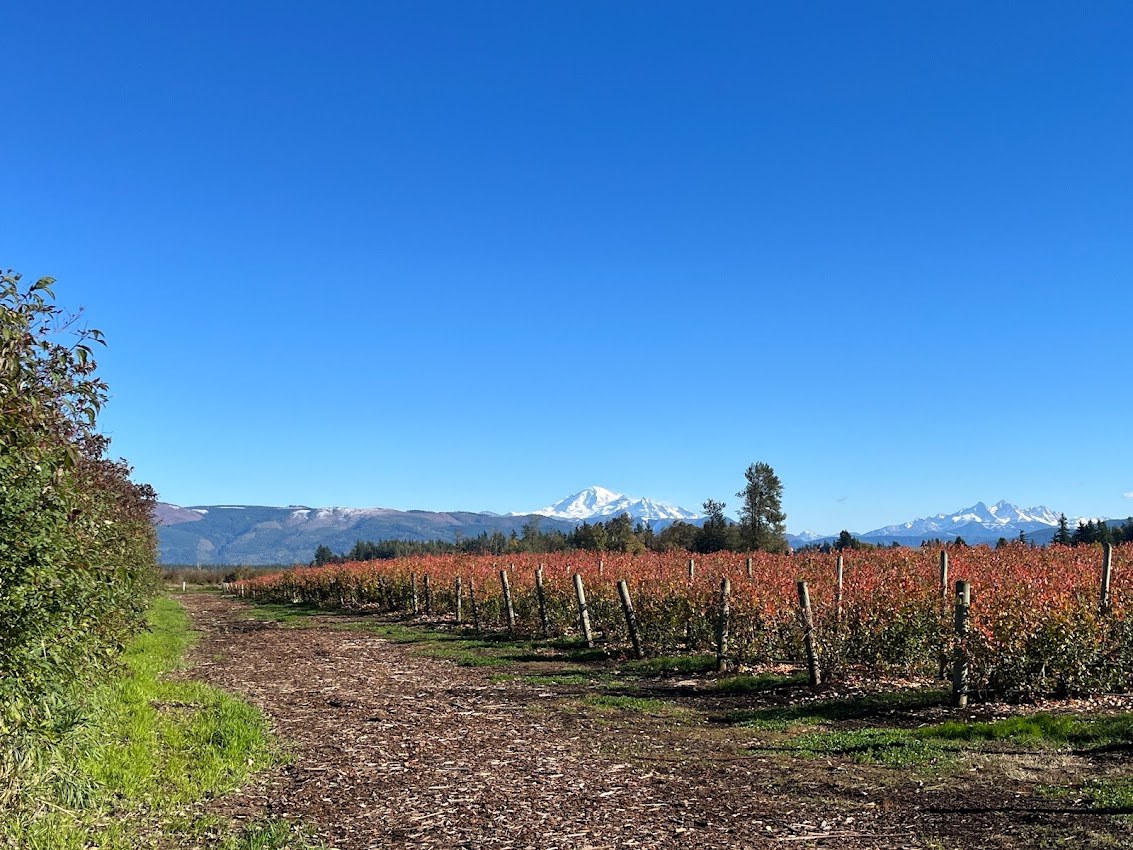Installing habitat without the pests: New tool for blueberry growers by Cody Wilson, Agricultural Manager at Pollinator Partnership
Published March 27, 2025
Highbush Blueberries
Highbush blueberries. The plant itself, a full and compact shrub that thrives in bright sunlight, bears slender green stems, which soon give way to the deep green leaves. Blooming in delicate clusters, each flower a soft, urn-shape, with a creamy white to pale, gentle blushed pink hue. Its summery, floral fragrance drawing in pollinators with the sweet reward of pollen and nectar.
Habroposa laboriosa / southeastern blueberry bee photo courtesy of Judy Gallagher

Highbush blueberries require pollination which is typically achieved through managed honey bees and/or wild bee populations. Native, wild bees, such as the southeastern blueberry bee (Habropoda laboriosa pictured on the left), pollinate through the process of buzz pollination. Blueberry bees are more efficient pollinators of blueberry flowers than honey bees. The southeastern blueberry bee attaches herself to the blueberry flower and vibrates very rapidly, shaking the flower until pollen is collected by the southeastern blueberry bee. When she moves on to the next flower, buzz pollination not only shakes out the pollen but causes pollen attached to her body to pollinate this next flower.
Once effectively pollinated, the flowers give way to tiny green berries, gradually swelling and turning from a soft green to the vibrant, rich blue that is signature to blueberries, like aggregates of sapphires nested among lush green leaves. Berries, round and plump, dusted with soft, blue yet silvered skins taut with delicate sweet and tangy flavors. Depending on variety, blueberries ripen from June through September.
Fall welcomes these wonders to don leaves and stems of flaming reds and oranges, decorating landscapes with seasonal colors. Over the next few months, blueberry shrubs lose their leaves as they prepare for dormancy through winters.
Fall welcomes these wonders to don leaves and stems of flaming reds and oranges, decorating landscapes with seasonal colors. Over the next few months, blueberry shrubs lose their leaves as they prepare for dormancy through winters.
Pollination brings environmental and economic benefits for blueberry growers
Photo Courtesy of Emma Rodgers, Washington State University
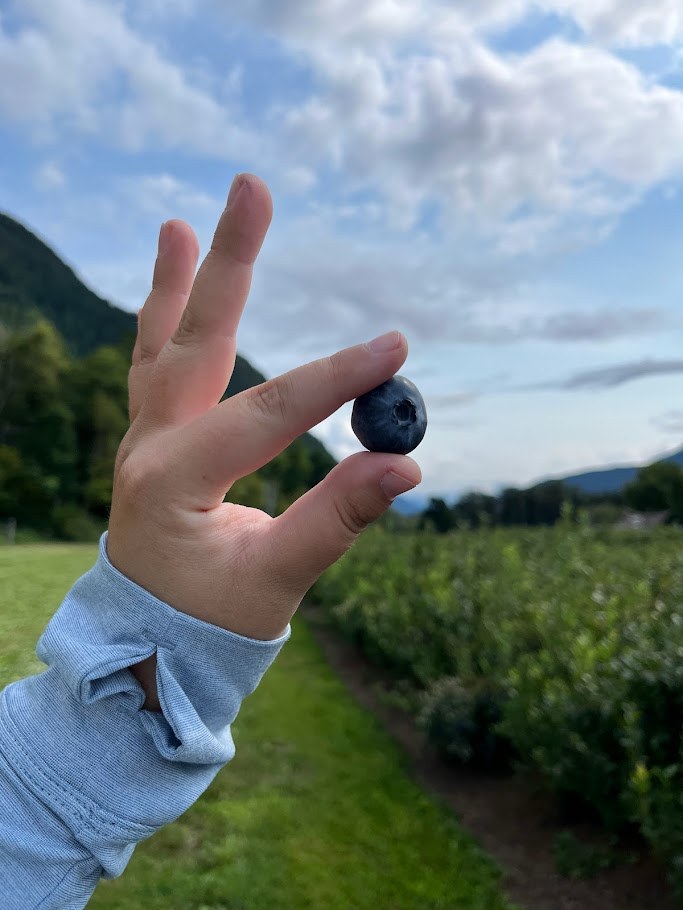
Whereas these plants provide aesthetic value year-round, economically, environmentally, and nutritionally, fruit production itself is of greatest importance. But for healthy fruit set, these plants need pollinators. Uncertain supply of honey bees and health concerns after blueberry contracts, combined with honey bees not being optimal pollinators of blueberries make support of wild pollinators essential to future production and competitiveness of U.S. blueberry crops.
As a result, many producers have concerns about production and feel that poor pollination has limited their highbush blueberry yields and quality, yet still many producers have less than 2% of their farmland devoted to habitat for pollinators and beneficial insects. To support pollinator populations, pollinator habitat is required. It is well-established that habitat near blueberry crops increases wild pollinators, pollination, and crop production, which can increase revenues by $15,000/hectare or $6,000/acre. Yet, a major impediment to the uptake of habitat measures by blueberry growers is the perceived risk of increased pest pressure in crops resulting from habitat inadvertently increasing pests of concern, such as spotted wing drosophila. Despite this concern, pollinator habitat installment does not necessarily mean pest habitat installment.
How We Addressed Grower Concerns Surrounding Pests
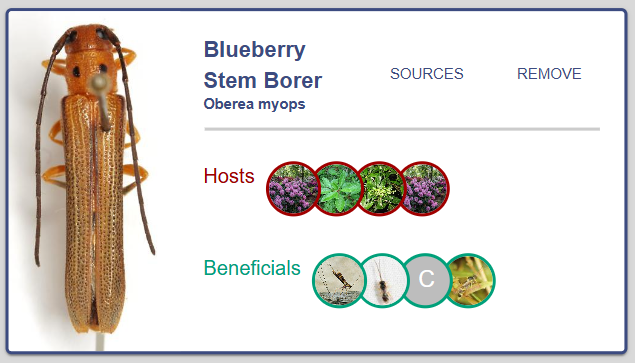
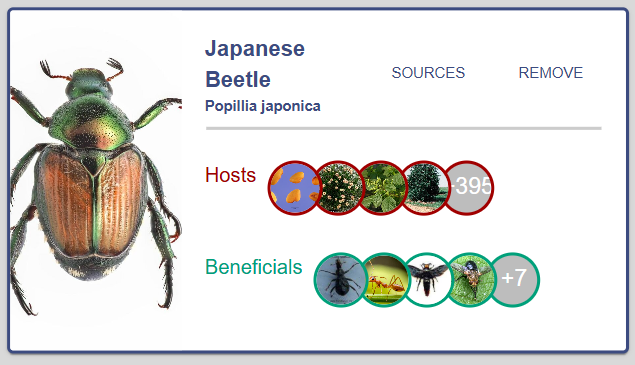
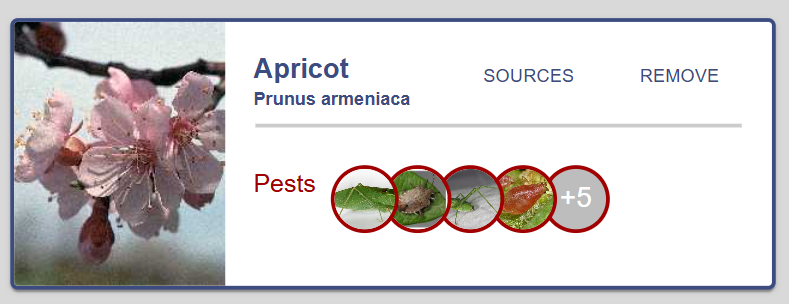
We created the Specialty Crop Multi State (SCMS) Blueberry PEST (Pollinator Enhancement Security Tool) so that growers and land managers can have increased confidence that the plants they select to create habitat for pollinators and pest control insects will reduce likelihood of increased pest problems.
There are three use cases for the SCMS Blueberry PEST Tool:
User Case #1: Using the Find Your Roots Tool as a starting point
Allows the user to use Pollinator Partnership’s Find Your Roots tool to generate a list of potential native plants for your habitat project. Once you have generated the list, export it as a CSV file and return to the SCMS Blueberry PEST tool to upload it and see which plants you may want to avoid planting to reduce the likelihood of supporting pests of concern in highbush blueberry. Files/lists generated from sources other than the Find Your Roots tool will not be compatible with SCMS Blueberry PEST tool plant upload feature. Only CSV files generated from the Find Your Roots tool can be uploaded in this field. If no pests of concern are identified for a plant, it means the plant was not identified as a host for any of the pests in the dataset.
User Case #2: assess pest risk from plants in existing habitat
Only plants that have been identified as a host for one or more of the pests in the dataset are included. If you cannot find a plant you are looking for, it was not identified as a host for any of the pests in the dataset. Through this user case, you can put in plant species you have around your farm or in your habitat. In doing so, you are provided plant profile cards that allow you to examine what pests are associated with the selected plant species. For example, common yarrow is associated with Japanese beetle and light brown apple moth.
User Case #3: manage pests damaging or threatening your crop
This user case provides profile cards on the pests themselves. By selecting the pests of interest, you can see more info about each pest, such as their alternate hosts to avoid implementing these plants into your habitat plans.
Agricultural tools like this one are useful for reducing barriers to implementing habitat. Addressing key concerns producers have regarding habitat adoption is the first step to increase pollinator habitat on agricultural lands.
Join fellow highbush blueberry producers and community/home gardeners in enhancing pollinator habitat and reducing pests by using the tool by clicking the button below:
SCMS Blueberry ToolTake the survey to improve the tool
And for blueberry producers, extension agents, and advisors, tell us your thoughts and experiences by participating in our SCMS Blueberry PEST Survey to understand barriers and solutions to habitat inclusion in highbush blueberry production in North America. Responses will be used to help growers create and manage pollinator habitat that they are confident is increasing production without creating problems, resulting in greater crop yield, and more sustainable and competitive blueberry production in the US.
Take the surveyFor any questions regarding the SCMS Blueberry PEST Tool, please contact Cody Wilson at cody@pollinator.org
Photo Courtesy of Emma Rodgers, Washington State University
